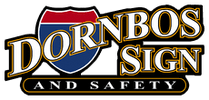Events That Shaped OSHA - Occupational Health and Safety
14th Aug 2017
Sadly, sometimes things are developed and implemented as the result of horrific events. Workplace injuries and deaths seem extra tragic because, in the end, we are all just trying to make a living. Here are a couple of events in the history of workplace safety, leading up to the passing of the Occupational Safety and Health Act ("OSHA").
- October 1871: The Great Chicago Fire and the Peshtigo Fire collectively kill approximately 1,400 people, with the bulk of the fatalities in Peshtigo.
- December 1907: More than 360 miners die in an explosion at coal mines in Monongah, West Virginia - the worst mining disaster in American history. This prompts Congress to create the U.S. Bureau of Mines three years afterwards.
- March 1911: 146 workers die in a Triangle Waist Company factory fire in the NY garment district. This was considered the "deadliest workplace incident" in New York City until the events of 9/11.
- October 1911: Founding of the United Society of Casualty Inspectors in NYC (which becomes the American Society of Safety Engineers three years later).
- September 1913: Work begins by the newly founded National Safety Council on safety issues. The Charter is signed in 1953.
- October 1915: The U.S. Labor Department's compendium of regulations is first released.
- July 1935: The National Labor Relation Board is created through the National Labor Relations Act. The Fair Labor Standards Act is enacted three years later.
- June 1939: The American Industrial Hygiene Association first meets.
- November 1942: The Cocoanut Grove nightclub in Boston goes down in flames, with people inadvertently sealed inside, resulting in 492 deaths. This event leads to major changes in fire codes and is considered the worst nightclub fire in American history.
- April 1947: Fire on a ship, Grandcamp, blows up its cargo of fertilizer and devastating Texas City, Texas. There are around 575 fatalities and 5,000 casualties.
- April 1967: The National Transportation Safety Board is launched for investigating civil aviation accidents and other large accidents.
- November 1968: 78 miners are trapped in a mine in Farmington, West Virginia. When they are assumed dead because the air inside could not support life, the mine is sealed to extinguish the fire. The next year, the Coal Mine Safety and Health Act is passed, which will lead to the Occupational Safety and Health Act the year after.
OSHA and Beyond
Since the enactment of OSHA, of course, there have been many other incidents that eventually become addressed through OSHA regulations. Safety signage is recognized as an important avenue to prevent workplace accidents, and OSHA codifies informational and design requirements relating to hazardous materials and dangerous materials, among other things, such as:
- Notice signs - which give information about a machine, equipment or building and what to do in the case of personal injury.
- General safety signs - which offer broad messages, such as where the medical equipment and sanitation are kept.
- Admittance signs - which point out and explain any dangerous consequences for entering restricted areas.
- Fire safety signs - which point out fire exits and firefighting equipment.
- Non-hazard signs - which usually deal with general facility information (mapping).
- Danger signs - which alert people where there is an immediate danger resulting from a hazard.
- Caution signs - which warn of potential hazards and to admonish unsafe practices.
- Safety instruction signs - which provide instructions that can help people work safely.
OSHA also touches upon where signs should be placed, how they should be placed, and depending on the nature of the signs, when they should be made visible.
Make sure you have durable signs that are OSHA compliant in your workplace to minimize the accidents in your workplace. Call us for a quote, check out our catalog, or contact us for more details.



